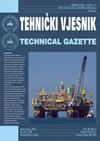基于遗传算法的绿色建筑能耗影响因素分析
IF 1.4
4区 工程技术
Q3 ENGINEERING, MULTIDISCIPLINARY
引用次数: 0
摘要
随着现代化的推进,高能耗建筑已经不能满足社会发展的需要。在低碳节能的大背景下,发展绿色建筑已成为必由之路,但其节能设计效果有待进一步研究。本研究针对照明和能耗,对开窗率、墙体换热系数、窗户换热系数、窗户透过率、屋顶保温系数等因素进行了基于遗传算法的多因素优化分析。首先,提出并实施了应用数据挖掘技术解决不同建筑节能设计问题的理论和技术方案,包括新建建筑和既有建筑的设计,以及决定性参数和非决定性参数的确定。其次,采用计算机仿真和理论分析对建筑方案进行优化分析,找出各影响因素的优化设计范围和绿色低能耗建筑的优化设计方法。总结了多因素优化理论和遗传算法原理,选择建筑外墙和窗户的换热系数作为优化变量,以实现建筑的低能耗和低围护成本。以获得更好的热舒适性为目标,建立了优化模型。最后,通过实证研究,设计了节能方案,并利用遗传算法求出单位投入增量成本增量效益最大化的最优解。结果表明,理想的增量效益来自于合理有效的技术组合,主要来自于空调系统和照明系统;基准收益率的设置将直接影响节能计划的优化效果,为决策者提供节能技术的最优组合。本文章由计算机程序翻译,如有差异,请以英文原文为准。
Analysis of Influencing Factors of Green Building Energy Consumption Based on Genetic Algorithm
: With the advancement of modernization, high energy consumption buildings can no longer meet the needs of social development. Under the background of low carbon and energy saving, the development of green buildings has become the only way, but its energy-saving design effect needs to be further studied. Aiming at lighting and energy consumption, this study carried out multi-factor optimization analysis based on genetic algorithm on factors such as windowing ratio, wall heat transfer coefficient, window heat transfer coefficient, window transmittance and roof insulation coefficient. Firstly, the theory and technical scheme of applying data mining technology to solve the energy-saving design problems of different buildings are proposed and implemented, including the design of new and existing buildings, as well as the determination of decisive parameters and non-decisive parameters. Secondly, computer simulation and theoretical analysis are used to optimize the analysis of the building scheme, so as to find the optimal design range of each influencing factor and the optimal design method of green low-energy building. Multi-factor optimization theory and genetic algorithm principle are summarized, and the heat transfer coefficient of external wall and window of the building is selected as the optimization variable, so as to achieve low energy consumption and enclosure cost of the building. Aiming at better thermal comfort, an optimization model was established. Finally, through empirical research, an energy-saving plan was designed, and genetic algorithm was used to obtain the optimal solution for maximizing the incremental benefits obtained by unit input incremental cost. The results indicate that the ideal incremental benefits come from a reasonable and effective combination of technologies, mainly from air conditioning systems and lighting systems; the setting of the benchmark return rate will directly affect the optimization effect of energy-saving plans, providing decision-makers with the optimal combination of energy-saving technologies.
求助全文
通过发布文献求助,成功后即可免费获取论文全文。
去求助
来源期刊

Tehnicki Vjesnik-Technical Gazette
ENGINEERING, MULTIDISCIPLINARY-
CiteScore
1.90
自引率
11.10%
发文量
270
审稿时长
12.6 months
期刊介绍:
The journal TEHNIČKI VJESNIK - TECHNICAL GAZETTE publishes scientific and professional papers in the area of technical sciences (mostly from mechanical, electrical and civil engineering, and also from their boundary areas).
All articles have undergone peer review and upon acceptance are permanently free of all restrictions on access, for everyone to read and download.
For all articles authors will be asked to pay a publication fee prior to the article appearing in the journal. However, this fee only to be paid after the article has been positively reviewed and accepted for publishing. All details can be seen at http://www.tehnicki-vjesnik.com/web/public/page
First year of publication: 1994
Frequency (annually): 6
 求助内容:
求助内容: 应助结果提醒方式:
应助结果提醒方式:


